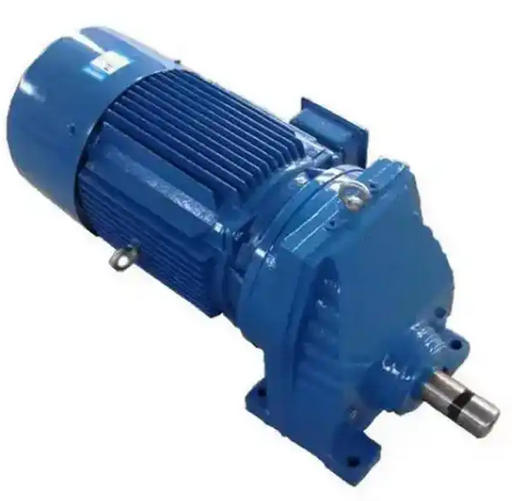What are the effects of axial movement of gear shaft on the service life of RX157-3 reducer
The axial movement of the gear shaft will significantly shorten the service life of the RX157-3 reducer, and the core impact is to cause abnormal wear of multiple components and imbalanced load distribution.
1. Accelerate the wear of core components and directly reduce their lifespan
Axial movement of the gear shaft can disrupt the originally designed meshing relationship and clearance, leading to rapid failure of critical components.
Increased gear wear: Shifting causes changes in the center distance of gear meshing, resulting in biased loads or local contact between tooth surfaces, leading to tooth surface wear, pitting, and even tooth breakage, which may shorten the gear life by more than 50%.
Acceleration of bearing failure: The movement of the shaft can cause uneven force on the inner and outer rings of the bearing, resulting in additional sliding friction between the rolling elements and the raceway, causing the bearing to heat up and make abnormal noises. Under normal circumstances, a bearing that can be used for 20000 hours may be damaged within 5000 hours.

Seal damage: Axial movement of the shaft can pull or squeeze seals such as oil seals and O-rings, causing seal failure and leading to lubricant leakage and impurity intrusion, forming a vicious cycle of "wear pollution".
2. Causing vibration and noise, resulting in chain damage
Axial movement can disrupt the stability of the gearbox operation, generate additional dynamic loads, and cause chain damage.
Vibration amplification: The movement of the shaft will be converted into periodic vibration, which will be transmitted to parts such as the box and foundation bolts, causing bolt loosening and box deformation, further exacerbating the misalignment of internal components.
Abnormal noise: Poor meshing and abnormal rotation of bearings can produce high-frequency noise, which is a manifestation of energy loss and also indicates that the component is in an abnormal working state. Long term operation can lead to micro crack propagation.
3. Causing lubrication failure and exacerbating the vicious cycle
Movement can disrupt the stability of the lubricating oil film and significantly reduce the lubrication effect.
Oil film rupture: During normal operation, a stable lubricating oil film is formed on the surface of gears and bearings, which plays a role in reducing wear. The instantaneous load changes caused by movement will break through the oil film, causing direct contact between the metal surface and generating "dry friction".
Lubricating oil pollution: After the seal fails, external dust and moisture will enter the box, contaminating the lubricating oil, reducing its viscosity and anti-wear performance. At the same time, the pollutants themselves will become abrasives, accelerating the wear of all moving parts.

